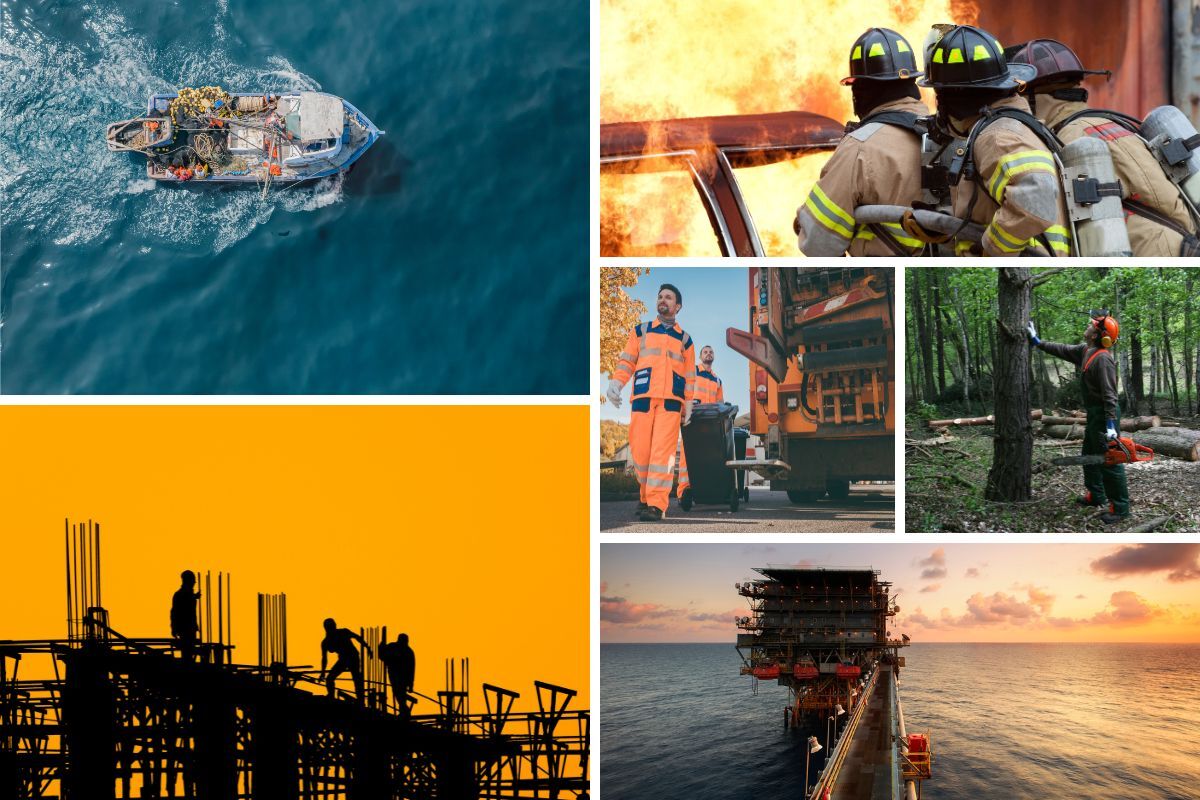
Ever wondered what the most dangerous jobs are? From scaling skyscrapers to diving deep underwater, some professions push the limits of human endurance and bravery. These roles often come with high risks but are essential for society's functioning. Construction workers, for instance, face hazards like falling debris and heavy machinery. Fishermen brave treacherous waters and unpredictable weather. Miners venture deep underground, confronting cave-ins and toxic gases. Pilots navigate through turbulent skies, ensuring passengers' safety. Each of these jobs demands not only skill but also a high level of courage. Ready to learn more about these perilous professions? Let's dive into the world of dangerous jobs!
Key Takeaways:
- Dangerous jobs like construction, fishing, and mining involve high risks such as falls, drowning, and cave-ins. Workers need courage, skill, and luck to stay safe.
- Roofers, pilots, and police officers face dangers like falls, mechanical failures, and violence. Their jobs require bravery, caution, and resilience to protect themselves and others.
Understanding Dangerous Jobs
Dangerous jobs often involve high risks, whether due to physical hazards, environmental conditions, or the nature of the work itself. These professions require courage, skill, and sometimes a bit of luck. Let's delve into some fascinating facts about these perilous occupations.
Construction Workers
Construction workers face numerous hazards daily, from heavy machinery to working at great heights.
- Falls are the leading cause of fatalities in construction. Workers often operate on scaffolding or ladders, increasing the risk of serious injuries.
- Exposure to harmful substances is common. Asbestos, lead, and other hazardous materials can cause long-term health issues.
- Heavy machinery accidents are frequent. Operating cranes, bulldozers, and other large equipment poses significant risks.
- Electrocution is a constant threat. Workers often deal with live wires and electrical systems, leading to potential shocks or burns.
- Struck-by incidents are prevalent. Falling objects or swinging equipment can cause severe injuries or fatalities.
Fishermen
Fishing, especially commercial fishing, is one of the most dangerous jobs due to unpredictable weather and rough seas.
- Drowning is a major risk. Rough waters and storms can capsize boats, leading to fatalities.
- Hypothermia is a constant danger. Cold water and harsh weather conditions can quickly lower body temperatures.
- Equipment-related injuries are common. Nets, hooks, and heavy machinery can cause severe injuries.
- Long hours increase fatigue. Exhaustion can lead to mistakes and accidents.
- Isolation complicates rescue efforts. Being far from shore makes emergency responses difficult.
Loggers
Logging involves cutting down trees and transporting timber, often in remote and rugged areas.
- Falling trees are a primary hazard. Misjudging a tree's fall can result in fatal accidents.
- Chainsaw injuries are frequent. Operating powerful saws requires precision and care.
- Heavy machinery poses risks. Loggers use equipment like skidders and loaders, which can be dangerous.
- Remote locations hinder medical help. Injuries in isolated areas may not receive immediate attention.
- Weather conditions add to the danger. Rain, snow, and wind can make logging even more hazardous.
Miners
Mining involves extracting minerals from the earth, often in confined and unstable environments.
- Cave-ins are a significant threat. Unstable tunnels can collapse, trapping workers.
- Explosions can occur. Methane gas and other flammable materials can ignite.
- Respiratory issues are common. Dust and chemicals can cause lung diseases.
- Heavy equipment accidents happen. Miners use drills, loaders, and other machinery that can malfunction.
- Darkness and confined spaces increase risks. Limited visibility and tight quarters make accidents more likely.
Roofers
Roofers repair and install roofs, often working at great heights and in various weather conditions.
- Falls are the leading cause of injuries. Working on sloped surfaces increases the risk of falling.
- Heat-related illnesses are common. Roofers often work in direct sunlight, leading to heat exhaustion or heat stroke.
- Sharp tools pose risks. Using knives, hammers, and other tools can result in cuts and punctures.
- Weather conditions can be hazardous. Rain, wind, and snow make roofing more dangerous.
- Electrical hazards are present. Roofers may come into contact with live wires or power lines.
Pilots and Flight Engineers
Flying aircraft, whether commercial or private, involves navigating complex systems and dealing with unpredictable conditions.
- Mechanical failures can be catastrophic. Malfunctions in engines or other systems can lead to crashes.
- Weather conditions are unpredictable. Storms, turbulence, and other weather phenomena pose risks.
- Human error is a factor. Mistakes in judgment or procedure can have fatal consequences.
- Long hours lead to fatigue. Tired pilots are more prone to errors.
- Terrorism and hijacking are threats. Security concerns add another layer of danger.
Police Officers
Law enforcement officers face various dangers while protecting the public and maintaining order.
- Violence is a constant threat. Officers often deal with armed suspects and dangerous situations.
- Traffic accidents are common. High-speed chases and roadside stops increase the risk of collisions.
- Exposure to hazardous materials occurs. Officers may encounter drugs, chemicals, or biological hazards.
- Stress and mental health issues are prevalent. The nature of the job can lead to PTSD and other mental health challenges.
The Reality of Dangerous Jobs
Dangerous jobs are no joke. Workers in these fields face risks daily, often putting their lives on the line to keep society running smoothly. From firefighters battling blazes to deep-sea fishermen braving treacherous waters, these roles demand courage, skill, and resilience. Understanding the hazards they encounter helps us appreciate their dedication and the importance of safety measures.
Next time you see a construction worker high up on a scaffold or a lineman fixing power lines during a storm, remember the dangers they face. Their bravery and hard work ensure our safety and comfort. Let's honor their commitment by advocating for better safety standards and supporting their efforts. Dangerous jobs may never be entirely risk-free, but with awareness and action, we can help make them safer for those who take on these critical roles.
Frequently Asked Questions
Was this page helpful?
Our commitment to delivering trustworthy and engaging content is at the heart of what we do. Each fact on our site is contributed by real users like you, bringing a wealth of diverse insights and information. To ensure the highest standards of accuracy and reliability, our dedicated editors meticulously review each submission. This process guarantees that the facts we share are not only fascinating but also credible. Trust in our commitment to quality and authenticity as you explore and learn with us.


